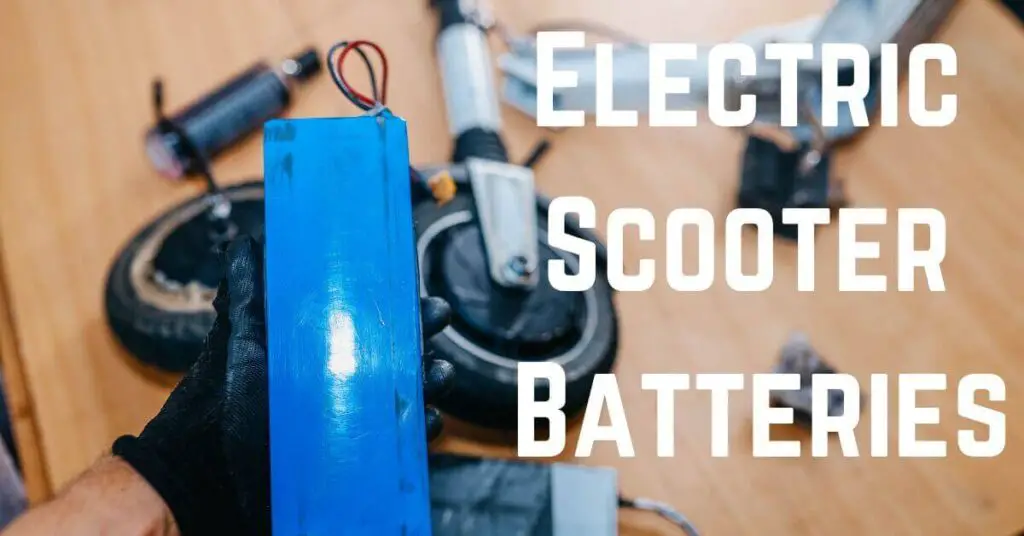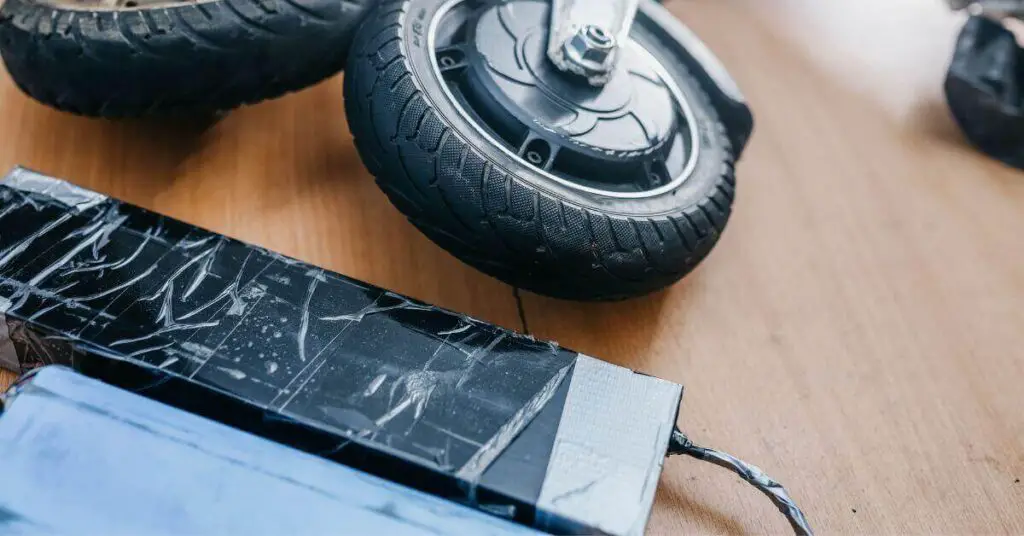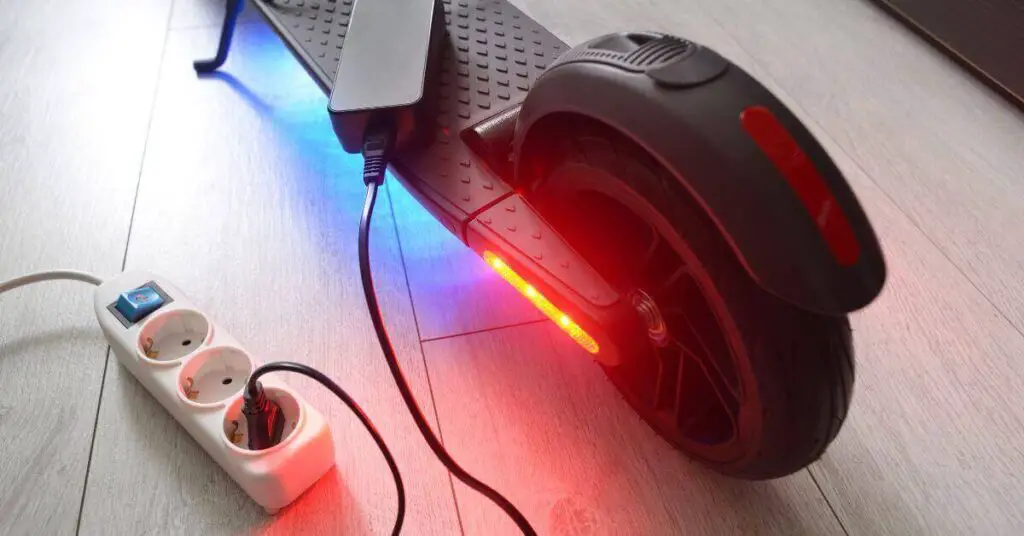
All recommendations within this article are informed by expert editorial opinion. If you click on a link in this story we may earn affiliate revenue.
Introduction to Electric Scooter Batteries
Welcome back, loyal electric scooter enthusiasts, and a hearty hello to our new readers! You’ve been revelling in the freedom of your electric scooter rides, but there’s a little electrifying enigma hiding beneath the battery. It’s a bit like a magic box with a power button, isn’t it?
No need to fret, though! We’ve all been card-carrying members of the ‘puzzled by electric scooter batteries’ club at one point or another. But today, we’re about to break those membership cards.
With this guide, we’re demystifying electric scooter batteries, breaking down the types, capacity, and even the oh-so-peculiar charging cycles. Are you ready to switch gears from battery bewilderment to battery brilliance? Let’s kick-start this enlightening journey together!
Different Types of Electric Scooter Batteries

One of the first things to understand about electric scooter batteries is that not all batteries are the same. In fact, there are several different types of batteries you might find in an electric scooter, each with its own pros and cons.
Lead Acid Batteries
The oldest type of rechargeable battery, lead-acid batteries are often found in older or budget electric scooter models. They’re relatively cheap and reliable but can be quite heavy and don’t have as long a lifespan as other types.
NiMH Batteries
NiMH stands for Nickel-Metal Hydride. These batteries are a step up from lead acid in terms of energy density (meaning they can store more power for the same size) and lifespan. However, they can be more expensive and require more careful handling to avoid damage.
Li-ion Batteries
Li-ion (Lithium-ion) batteries are the newest and most common type of battery used in modern electric scooters. They’re lightweight, have a high energy density, and have a relatively long lifespan, but they’re also the most expensive.
Understanding Battery Capacity
An electric scooter battery’s capacity is critical as it determines how far you can travel on a single charge.
How is Battery Capacity Measured?
Battery capacity is typically measured in ampere-hours (Ah) or milliampere-hours (mAh), with higher numbers indicating more substantial capacity. Some manufacturers might also give a range estimate in miles or kilometres, but keep in mind that this is usually under ideal conditions.
What Affects Battery Capacity?
Several factors can impact your electric scooter’s battery capacity, including the battery’s age, the ambient temperature, and how the scooter is ridden. For instance, constant high-speed riding or frequent uphill travels will drain the battery faster.
How to Charge Electric Scooter Batteries

Now that you understand what battery capacity is and what impacts it, let’s talk about charging.
Charging Procedures
Each type of electric scooter battery may have a slightly different charging procedure, but in general, it involves connecting the charger to a power source, plugging the charger into the scooter’s charging port, and leaving it to charge until it reaches full capacity. Always follow the manufacturer’s instructions for the best results.
Safety Measures
Safety is paramount when charging any electric scooter battery. Always charge in a dry, well-ventilated area and never leave a charging battery unattended. If you notice any unusual smells, or sounds, or the battery becomes excessively hot, disconnect it immediately and contact the manufacturer.
How to Extend the Life of Electric Scooter Batteries
To maximise the lifespan of your electric scooter battery and keep it running optimally, there are a few simple maintenance practices you can follow.
Regular Charging
Regularly charging your electric scooter battery is vital. Even if you’re not using the scooter, it’s a good idea to top up the battery every few weeks to keep it healthy. Don’t wait until the battery is completely drained before charging; instead, aim to recharge when it’s around 20-30% remaining.
Correct Storage
If you’re not using your electric scooter for a while, don’t just leave the battery sitting in the scooter. Instead, remove the battery and store it in a cool, dry place. This helps to prevent any potential damage or reduction in capacity.
Avoiding Extreme Temperatures
Electric scooter batteries don’t perform well in extreme temperatures, whether hot or cold. Avoid leaving your scooter in direct sunlight or in freezing conditions to keep the battery performing at its best.
Common Problems and Solutions
Despite your best efforts, you may still run into some common battery problems. Don’t panic – there are often simple solutions!
Battery Drain Issues
If your battery seems to be draining too quickly, it could be due to overuse, high speeds, or frequent uphill travels. Try adjusting your riding habits and see if it makes a difference.
Inefficient Charging
If your battery doesn’t seem to charge properly, it could be a problem with the charger, the battery, or the scooter’s charging system. Try using a different charger if you have one, and if the problem persists, contact the manufacturer.
FAQs (Frequently Asked Questions)
What are some top UK electric scooters under £1500 in 2023 and their key specs?
Here are some top UK electric scooters under £1500 in 2023 and their key specs:
- Kaabo Mantis Limited Orange: On sale for £1,450.00 (originally £1,599.00), this scooter can reach 30 mph and has a range of 37 miles. Check it out
- Apollo Ghost – 2022: Priced between £1,439.00 to £1,529.00, it offers a top speed of 34 mph and a range of 37 miles. Check it out
- Apollo City Pro 2022: On sale for £1,439.00 (originally £1,599.00), this scooter offers a top speed of 32 mph and a range of 38 miles. Check it out
- Emove Cruiser Electric Scooter: Priced at £1,349.00, this scooter can reach 33 mph and provides a range of 56 miles. Check it out
- Apollo Ghost: Priced between £1,349.00 to £1,439.00, this scooter offers a top speed of 34 mph and a range of 39 miles. Check it out
How long does an electric scooter battery last?
On average, electric scooter batteries last between 2-4 years, but this can vary depending on the battery type, usage, and maintenance.
How far can I go on a single charge?
The range of an electric scooter varies based on the battery capacity, scooter model, terrain, rider’s weight, and riding style. On average, you can expect a range of 10-40 miles per charge.
Can I replace the battery in my electric scooter?
Yes, most electric scooter batteries can be replaced. However, always check with your manufacturer or a professional to ensure you get the correct battery type for your scooter.
How long does it take to charge an electric scooter battery?
Charging times vary based on the battery’s capacity and the charger’s power output. Generally, it can take between 2-12 hours to fully charge an electric scooter battery.
Final Thoughts
So, we’ve zipped through the electrifying world of scooter batteries, from the types to the care and feeding of these power cells. And guess what? You’re now officially a battery boffin!😁 Not as hard as you thought, right?
Knowing your battery inside out not only means longer life for your scooter but also adds an extra layer of smoothness to your rides. So remember, while your battery might not need a pampering spa day, a little TLC goes a long way in keeping it in top gear.
Thank you for taking this enlightening journey with us, battery whisperers! We hope you found this guide not only informative but also sparked your curiosity. If you have more questions, remember, we’re here for you. You can also poke your scooter’s manufacturer for more details. So, until next time, stay charged and keep scooting!

7 Responses